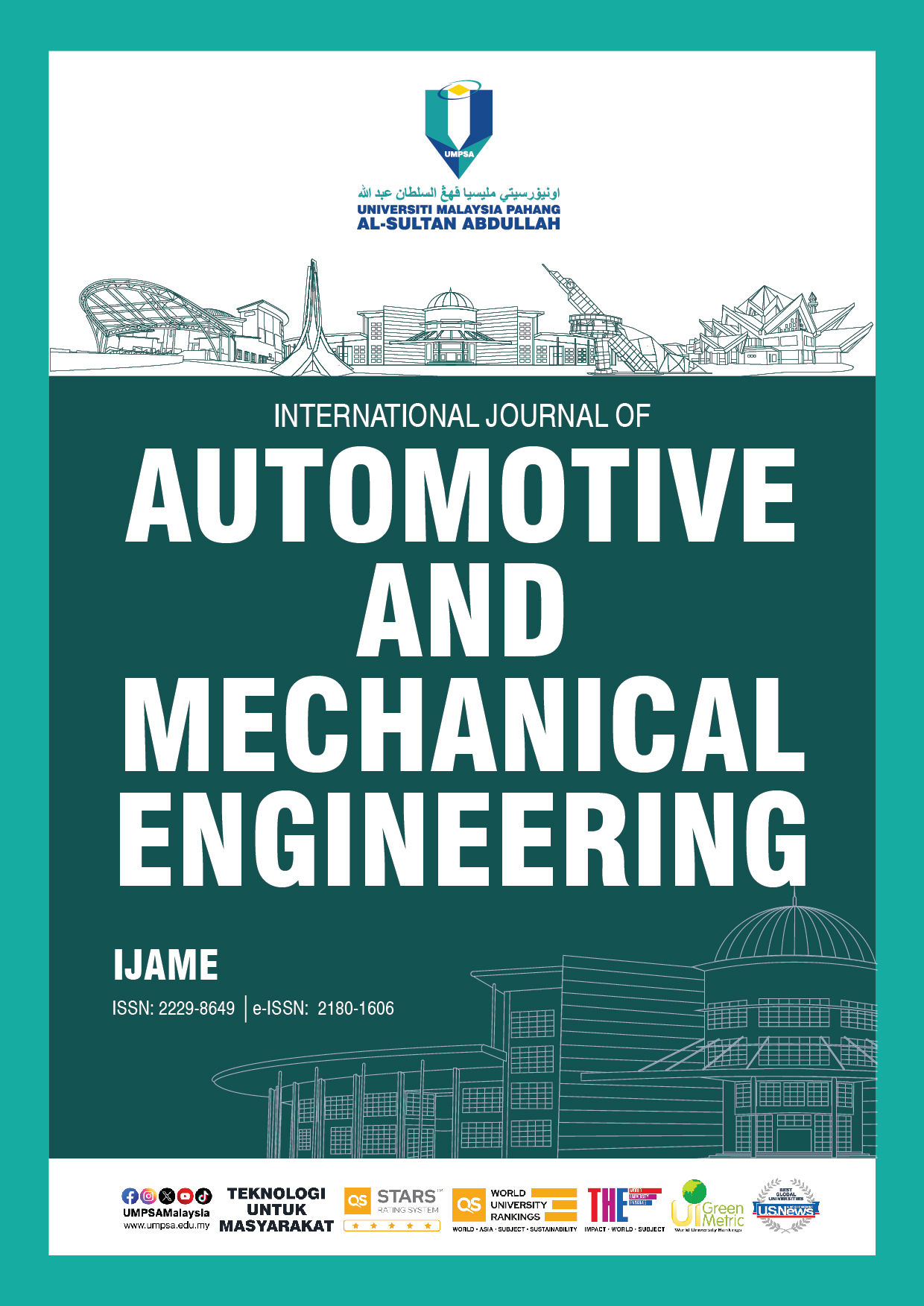Evaluation of Automotive Bio-Composites Crash Box Performance
DOI:
https://doi.org/10.15282/ijame.20.4.2023.11.0846Keywords:
Crashworthiness, Crash box design, Quasi-static simulation, Low velocity impact, LS-DYNAAbstract
In the automotive industry, sustainable materials, such as bio-composites, are progressively being adopted due to their lightweight feature, which reduces vehicle weight, fuel consumption and pollutants emissions. Bio-composites are renewable and biodegradable, making them more environmental-friendly. However, limited investigations into the use of bio-composites in crash box applications have indicated that they lack the impact strength to fully absorb collision energy. This study aims to compare the crashworthiness performance of crash boxes made from OPEFB fiber/epoxy and kenaf fiber/epoxy composites, with conventional steel and carbon fiber/epoxy using LS-DYNA quasi-static simulations. Six different crash box designs are proposed: square, hexagonal, decagonal, hexagonal 3-cell, hexagonal 6-cell, and decagonal 10-cell structure, to evaluate the effect of these designs on crash box performance. The results show that bio-composite crash boxes are inferior to traditional materials in terms of energy absorption and specific energy absorption, but they yield better performance in crush force efficiency. In terms of design, decagonal 10-cell structure produces the highest specific energy absorption and energy absorption for bio-composites. Hence, optimization is performed on the OPEFB fibre/epoxy decagonal 10-cell crash box, aiming to increase energy absorption capability by varying the thickness, perimeter, and length of the crash box. The design is optimized by increasing thickness and maintaining length and perimeter. Compared to the original design, the optimized design improves energy absorption by 59% and specific energy absorption by 19%. The optimized design is then subjected to both quasi-static and impact loading tests, revealing that the optimized OPEFB fibre/epoxy crash box design exhibits 44% lower energy absorption than steel under quasi-static load, but it demonstrates a 56% increase in crush force efficiency and a 6 % increase in specific energy absorption. Under impact load, it shows a 91% increase in specific energy absorption compared to the traditional square steel crash box.
Downloads
Published
Issue
Section
License
Copyright (c) 2023 The Author(s)

This work is licensed under a Creative Commons Attribution-NonCommercial 4.0 International License.







